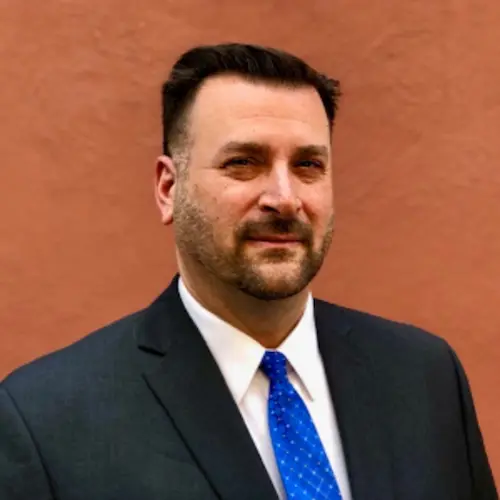
Table of Contents
Trauma vs PTSD: What’s The Difference?

Written By: Ashley Laderer

Clinically Reviewed By: Dr. Don Gasparini
December 28, 2022
9 min.
While many teens may experience trauma, not all of them develop PTSD. Here’s what you need to know about the differences.
Learn more about our Clinical Review Process
Table of Contents
On social media, you may see or hear the word “trauma” thrown around a lot. It seems like it has become something of a buzzword. But what exactly is trauma, and how do you know if trauma has progressed into a mental health condition known as post traumatic stress disorder?
Trauma affects a lot of people. It’s estimated that about 50% of women and 60% of men go through at least one traumatic event in their lifetime. Traumatic incidents can affect some people more deeply than others. While certain individuals may bounce back quickly from trauma, others can experience long-lasting effects that can lead to negative mental health outcomes, such as post traumatic stress disorder, also known as PTSD.
Here’s what you need to know about trauma, post traumatic stress disorder, and treatment options.
What exactly is trauma?
Trauma is the emotional response you experience after going through or witnessing very distressing life events.
There are three main types of trauma:
- Acute: Acute trauma happens after one instance of an intense traumatic event, like a shooting or assault, with the onset of the trauma typically occurring immediately after.
- Chronic: Chronic trauma is when you experience prolonged exposure to stressful events, or experience them repeatedly, such as ongoing child abuse or bullying.
- Complex: Similar to chronic trauma, complex trauma involves repeated or multiple traumatic events, such as being neglected as a child or experiencing violence multiple times. All of this can pile up and make you feel hopeless and confused, like there’s no way out. This commonly results in what is known as complex PTSD.
Sadly, many occurrences in life can be traumatic. Some examples of life events that can result in trauma are:
- Being a victim of abuse (child abuse, physical abuse, or sexual abuse)
- Being exposed to a terrorist attack
- Being in combat or at war
- Being kidnapped
- Being the victim of a crime
- Being threatened with weapons
- Getting in a car accident
- Experiencing a fire
- Experiencing a natural disaster
- Experiencing the sudden death of a loved one
- Receiving a diagnosis of a life-threatening condition
Trauma affects people in different ways –– and while some people may go on to develop mental health struggles like PTSD due to their trauma, others won’t.
What is the difference between PTSD and a normal response to trauma?
It’s normal to experience an array of emotions or symptoms after experiencing trauma, but feeling this way doesn’t necessarily mean you have post traumatic stress disorder. Furthermore, experiencing a traumatic event does not necessarily mean that you’ll develop a mental health condition. It’s estimated that one-third of people who live through intense trauma go on to have PTSD.
Do you need more support with
your mental health?
Charlie Health can help.
In the short term, a trauma response may include feelings of denial or shock. You may feel like the event didn’t really happen to you, or you may refuse to believe that this is your reality. Everybody responds to trauma differently, and you can experience both emotional and physical reactions.
Some examples of trauma responses include:
- Feeling emotions such as anger, guilt, sadness, or shame
- Feeling numb or hopeless
- Feeling anxious or depressed
- Experiencing physical symptoms like headaches, nausea, and fatigue
- Wanting to isolate and withdraw from loved ones
- Getting startled easily
- Having trouble sleeping
- Having nightmares
- Having flashbacks of the trauma
- Having trouble falling asleep
- Having difficulty concentrating or completing work
In a “normal” response to trauma, any of these symptoms will likely be relatively short-lived and won’t necessarily interfere with your functioning and quality of life for months or years to come. On the flip side, PTSD is a long-term chronic mental health condition that severely impacts your day-to-day functioning and quality of life. Furthermore, you may not develop PTSD symptoms until long after a traumatic event, even potentially years after.
There are specific diagnostic criteria for someone to be diagnosed with PTSD, according to The Diagnostic and Statistical Manual of Mental Disorders, Fifth Edition (The DSM-5). There are various types of symptoms associated with PTSD, including:
Intrusion symptoms:
- Repeated memories of the event that are distressing
- Recurring nightmares about the trauma
- Flashbacks where you feel like the traumatic incident is actually occurring now
- Feeling emotionally distressed when you are triggered by something that reminds you of the traumatic event
- Feeling physical symptoms when triggered by something that reminds you of the traumatic event
Avoidance symptoms:
- Avoiding or trying to avoid internal reminders (such as thoughts or memories) of the traumatic incident
- Avoiding or trying to avoid external reminders (such as places, people, or situations) that make you think of the traumatic incident
Cognitive/mood symptoms:
- Having trouble remembering parts of the traumatic incidents
- Having ongoing drastic negative beliefs about yourself or others
- Consistently blaming yourself or others for the traumatic incident
- Consistently experiencing negative emotions
- Loss of interest in activities
- Feeling like you are detached from others
- Being unable to feel positive emotions
Arousal and reactivity symptoms:
- Irritability, anger, and aggression
- Acting recklessly or being self-destructive
- Being hypervigilant
- Being easily startled
- Having trouble concentrating
- Having trouble with sleep
Furthermore, some people will have PTSD with dissociative symptoms. These include derealization and depersonalization. This can make you feel like you’re having an out-of-body experience, or that you’re detached from yourself. Or, you might feel like your surroundings are distorted or not totally real.
Based on the number of symptoms you have from each cluster of symptoms and the severity of how they impact you, a mental health professional will determine if you meet the diagnostic criteria to be diagnosed with PTSD.
Various factors will determine if your trauma will develop into PTSD. Some of these include:
- The severity of the trauma
- If you’ve already experienced past trauma or major stressors
- If you have preexisting mental health conditions
- How supported (or not) you were during the trauma
- Your overall temperament
What is the difference between PTSD and acute stress disorder?
PTSD isn’t the only mental health condition that can result from trauma. Another potential outcome you may have heard of is acute stress disorder (ASD). The symptoms of ASD are very similar to the above PTSD symptoms. However, as the name suggests, the condition is more acute, or shorter-lasting. While PTSD symptoms can last for years, acute stress disorder symptoms only last for at least three days or up to a month after trauma exposure.
It’s estimated that around 6% to 33% of trauma survivors will develop acute stress disorder. From here, around half of people with ASD will develop PTSD –– especially if they don’t get the treatment they need.

What treatment is available for trauma, acute stress disorder, and PTSD?
If you have experienced trauma and you’re having trouble getting through it alone, seeking the help of a mental health professional can be very helpful to unpack your emotions, learn how to cope, and move forward in a healthy way. Addressing trauma right away rather than waiting for symptoms to worsen is key to preventing PTSD.
However, if your trauma develops into acute stress disorder or post traumatic stress disorder, help is available, and the courses of treatment are similar. Two main treatments are therapy and medication. In many cases, a combination of therapy and medications is used for effective results.
When it comes to therapy, a few different types are useful for PTSD treatment. These include:
- Cognitive behavioral therapy (CBT): CBT will help shed light on your thoughts, feelings, and behaviors so you can become more aware of them and how they all affect each other. You can learn to identify unhealthy thoughts and behaviors and learn new healthy ways to think and cope with difficult emotions. It’s key to work with a trauma-informed therapist when dealing with PTSD or ASD.
- Exposure therapy: Trauma can cause you to avoid certain places, things, people, or memories that remind you of the traumatic event that occurred. Exposure therapy for PTSD can help you safely revisit triggers with the help of a mental health professional. By exposing yourself to triggers with the help of a therapist, you can work towards desensitizing yourself to the distressing things so they don’t provoke such a strong emotional reaction.
- Eye movement desensitization and reprocessing (EMDR): EMDR is a type of therapy that utilizes your eye movements to help process emotional memories, often associated with trauma. This method can help you process trauma more quickly.
As for medication, the most commonly prescribed meds for ASD and PTSD are antidepressants and anti-anxiety medications. However, be aware that it can take at least a few weeks for antidepressants to kick in and for you to feel a difference. It may also take some trial and error with your psychiatrist to figure out what the best medication or combination of medications is for your unique situation. Your doctor will also consider any other co-occurring mental health conditions when coming up with your treatment plan.
On top of therapy and medication, it’s so important to take care of yourself during these difficult times. Making some tweaks to your lifestyle and practicing self-care can make a big difference. Here are some ways you can do this:
- Staying active, getting in a minimum of 15 minutes of physical activity daily
- Eating a balanced healthy diet
- Getting enough sleep
- Avoiding alcohol and drugs
- Keeping a strong social support system
- Using a creative outlet like music or art for your emotions
- Practicing mindfulness/meditation
What is the link between PTSD and suicide risk?
Experiencing trauma and having PTSD increase the risk of experiencing suicidal thoughts or behaviors. It can be scary to have these thoughts, and you may feel very alone in what you’re experiencing.
If you’re having thoughts about hurting yourself or you’re actively thinking about suicide, it’s important to reach out for help immediately. There are confidential and free resources available 24/7 that can help you in a mental health crisis, such as:
- 988: 988 is the Suicide & Crisis Lifeline. Call or text 9-8-8 to connect with a trained crisis counselor in your area. An online chat option is available, too.
- Crisis Text Line: Crisis Text Line is a texting-based service. Text HOME to 741741 to get connected with a crisis counselor. It’s available on WhatsApp, too.
- The Trevor Project: If you’re part of the LGBTQIA+ community, The Trevor Project is a great option. Call them at 1-866-488-7386, text ‘START’ to 678-678, or use their online chat.
Please note that these are not substitutes for ongoing formal mental health treatment for ASD or PTSD.
How Charlie Health can help
If you’re a teen or young adult and you think you might have post traumatic stress disorder or any other mental health condition, Charlie Health may be able to help.
Our personalized intensive outpatient program provides mental health treatment for teens, young adults, and families dealing with a variety of struggles, including PTSD. In our program, you will be matched with a therapist who meets your specific needs, and connected with a group of peers from similar backgrounds with similar struggles to help you remember you are not alone.
Coping with PTSD can be difficult and scary at times, but it is absolutely possible for people with PTSD to push forward and heal from trauma. Help is here now. We’re available 24/7 to get you started on your healing journey.




